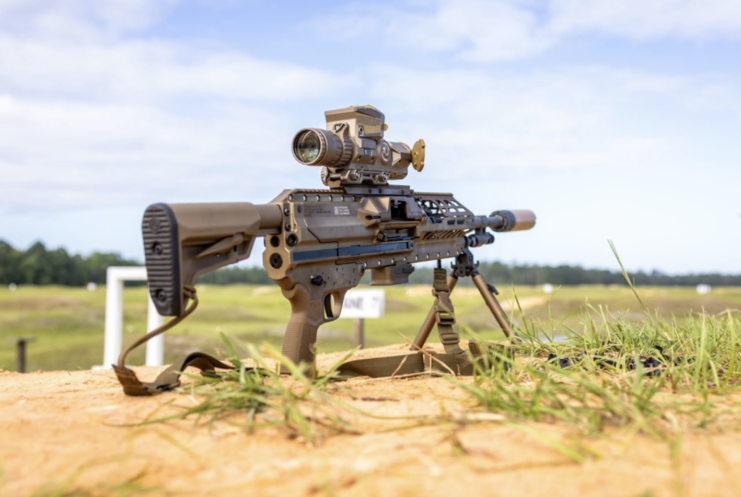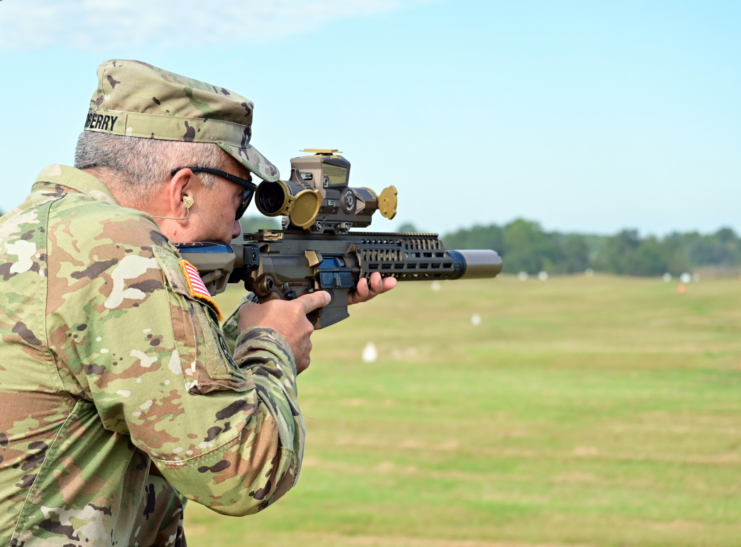XM7: The US Army’s Powerful New Standard-Issue Rifle Can Break Through Body Armor
The US Army has begun fielding its replacement for the 1990s-era M4 Carbine, marking a major step in the evolution of infantry weaponry. Developed under the Next Generation Squad Weapon (NGSW) Program, the rifle presents cutting-edge solutions to the challenges soldiers face in modern warfare. With its advanced design, more powerful ammunition and enhanced capabilities, the XM7 promises to redefine the way troops engage enemy forces on the battlefield.
Why was the XM7 developed?

As aforementioned, the XM7 was developed as part of the Next Generation Squad Weapon program, which aims to replace both the M4 Carbine and the M249 Squad Automatic Weapon. While launched in 2019, the desire to give troops a newer weapon for combat had emerged during the War in Afghanistan, as it was found the 5.56 x 45 mm NATO rounds used by both guns couldn’t penetrate body armor or barriers from longer distances.
Among the companies to submit designs was SIG Sauer, which received a 10-year contract from the US Army in 2022 to provide a replacement for the M4 (XM7 rifle) and the M249 (XM250 light machine gun). The former is based on the gas-operated, magazine-fed SIG MCX-Spear, and it notably chambers the newer 6.8 x 51 mm Common Cartridge, which provides both a greater range and lethality; it has an effective range of 600 meters, which is twice that of the 5.56 mm NATO.
XM7 specs.

The XM7 features a host of state-of-the-art upgrades that set it apart from its predecessor. A gas-operated, semi-automatic rifle, it has a fully modular design that allows soldiers to adapt it to various mission profiles with ease. Along with being compatible with several types of optics and suppressors, its fire selector allows operators to switch between different modes. When paired with the weapon’s advanced fire-control systems, troops are better able to engage threats in combat environments.
To ensure ease of use in the field, the XM7 is designed to be ambidextrous, meaning right- and left-handed operators can fire it with ease. It also features a short-stroke piston system that allows for peak performance in less-than-ideal conditions. However, the most interesting part is its M-LOK handguard, which allows for quick and direct accessory attachment.
Finally, as aforementioned, the XM7 chambers the new 6.8 x 51 mm round, which offers increased accuracy, range and penetrating power, making it effective against newer types of personnel and light armor.
What do soldiers think?

The XM7 began field testing in March 2024, and, thus far, early reviews have been overwhelmingly positive. Soldiers have praised the rifle’s ergonomics and improved lethality, with 101st Airborne Division paratroopers noting its heightened accuracy and better reliability, compared to the M4 Carbine.
While first impressions have been generally positive, there have been some issues noted by troops. The first is that the XM7 is a lot heavier than its predecessor (over two pounds more), and it also has significant recoil. Concerns have also been raised about the 6.8 x 51 mm cartridge, which is heavier than the 5.56 x 45 mm NATO. To ensure ease of movement in the field, it’s likely the amount of ammunition carried by one person will have to be lessened.
Despite these issues, most soldiers agree that the XM7’s benefits far outweigh its drawbacks – and they would know, as the rifle has undergone more than 25,000 hours of testing.
Equipping the XM7 on the battlefield

You might be wondering, who will equip the XM7 once it enters combat service? The US Army plans for it to be operated by close-combat forces, meaning it’ll be carried by the likes of cavalry scouts, combat medics and infantrymen. As of publishing, there isn’t a plan to have non-combat soldiers equip the rifle.
To ensure enough troops can be equipped with the XM7, the Army intends to purchase 111,428 units. There are also plans in place to build an ammunition plant in Missouri, so that the weapon can be adequately distributed across the service.
More from us: Was the Breda Modello 30 the Worst Light Machine Gun of World War II?
Want War History Online‘s content sent directly to your inbox? Sign up for our newsletter here!
The Army began issuing the XM7 as part of Fiscal Year 2025.
The post XM7: The US Army’s Powerful New Standard-Issue Rifle Can Break Through Body Armor appeared first on warhistoryonline.
XM7: The US Army’s Powerful New Standard-Issue Rifle Can Break Through Body Armor
Philippines Truth
Post a Comment
0 Comments